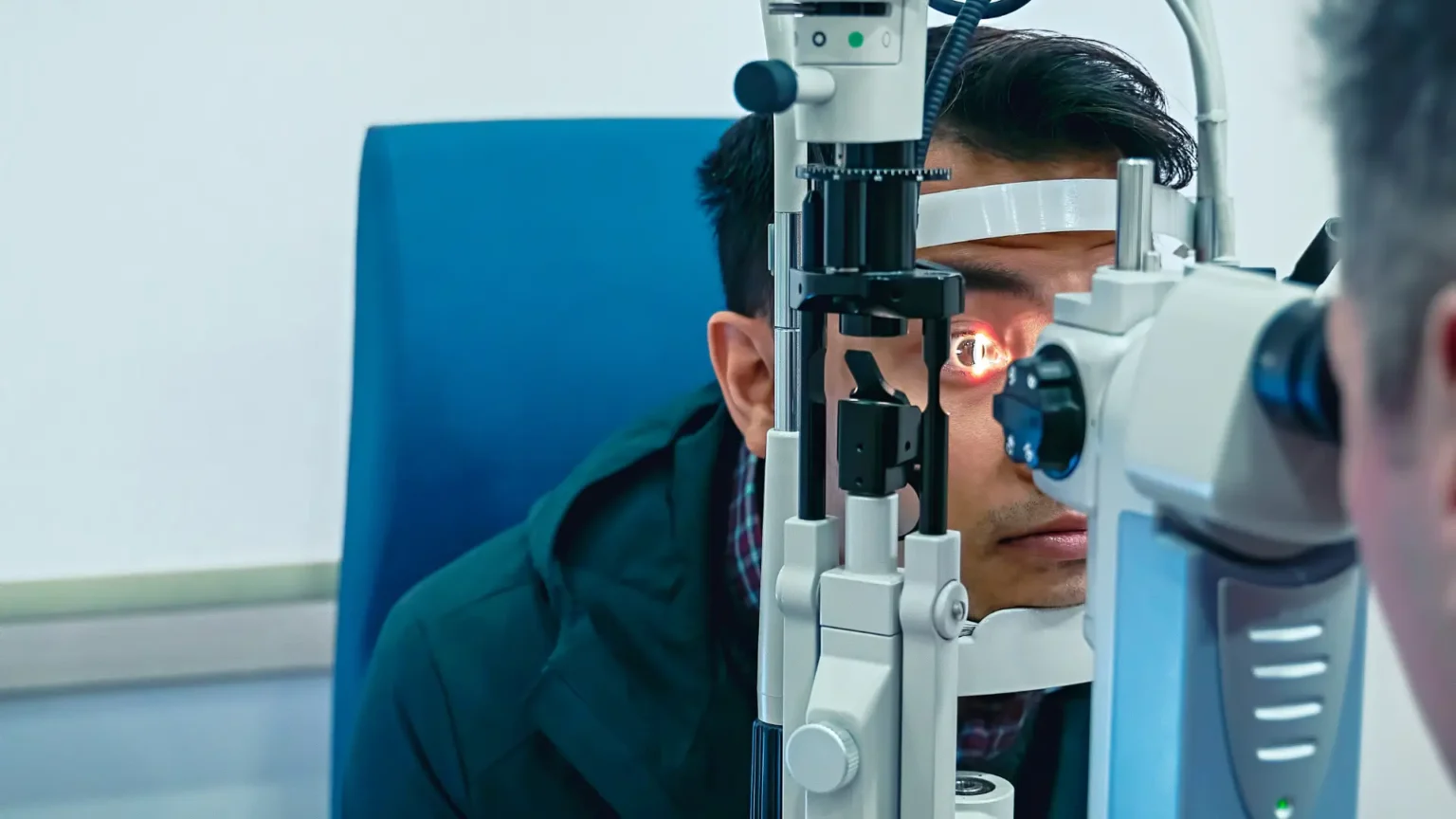Compare LASIK Surgeries
Compare LASIK Surgeries
Updating comparison…
| Variable | |
|---|---|
| Select surgeries to compare. | |
Select surgeries to compare their details. You can add or remove surgeries by clicking the buttons above. To close the popup, click the × button, click outside the popup, or press the Escape key.
Laser vision correction has revolutionized the field of ophthalmology, offering millions of people the chance to see clearly without the need for glasses or contact lenses. LASIK (Laser-Assisted In Situ Keratomileusis) is the most well-known procedure, but advancements in technology have led to various types of LASIK and similar laser eye surgeries. This comprehensive guide explores the different types of LASIK surgeries, how they work, their benefits, risks, and who they are best suited for.
Understanding the Basics of Laser Eye Surgery
Before delving into the different types, it’s essential to understand how laser eye surgery works. The primary goal is to reshape the cornea—the clear front part of the eye—to correct refractive errors such as:
- Myopia (Nearsightedness): Difficulty seeing distant objects clearly.
- Hyperopia (Farsightedness): Difficulty seeing close objects clearly.
- Astigmatism: Distorted or blurred vision at all distances due to an irregularly shaped cornea.
Laser eye surgeries use various techniques and technologies to achieve this corneal reshaping, improving the eye’s ability to focus light accurately onto the retina.
Types of LASIK and Laser Eye Surgeries
1. Conventional LASIK
Procedure Overview:
Conventional LASIK is the traditional method of laser eye surgery. It involves two main steps:
- Flap Creation: A thin flap is created on the cornea using a mechanical device called a microkeratome, which has a tiny oscillating blade.
- Corneal Reshaping: The surgeon lifts the flap to expose the underlying corneal tissue and uses an excimer laser to reshape it, correcting the refractive error. The flap is then repositioned to heal naturally.
Ideal Candidates:
- Individuals with mild to moderate myopia, hyperopia, or astigmatism.
- Those with adequate corneal thickness.
Benefits:
- Quick procedure (about 15 minutes per eye).
- Rapid visual recovery, often within 24 hours.
- Minimal discomfort during and after surgery.
Risks and Considerations:
- Potential flap-related complications (e.g., dislocation, wrinkles).
- Dry eyes, glare, or halos around lights, especially at night.
- Not suitable for individuals with thin corneas or certain eye conditions.
2. Wavefront-Guided LASIK (Custom LASIK)
Procedure Overview:
Wavefront-guided LASIK uses advanced mapping technology to create a detailed, personalized map of the eye’s unique imperfections, including higher-order aberrations that can affect visual quality.
- Eye Mapping: A wavefront analyzer measures how light travels through the eye, detecting subtle vision errors.
- Customized Reshaping: The excimer laser is programmed with this data to perform a highly personalized corneal reshaping.
Ideal Candidates:
- Individuals seeking optimized visual outcomes.
- Those experiencing visual symptoms like glare or halos.
Benefits:
- Potential for sharper vision than conventional LASIK.
- Reduced risk of night vision disturbances.
- Customized treatment tailored to the individual’s eye.
Risks and Considerations:
- Similar risks to conventional LASIK but potentially minimized.
- Higher cost due to advanced technology.
- Availability may be limited to clinics with specialized equipment.
3. Bladeless LASIK (All-Laser LASIK or Femtosecond LASIK)
Procedure Overview:
Bladeless LASIK replaces the mechanical microkeratome with a femtosecond laser for flap creation.
- Flap Creation: A femtosecond laser creates the corneal flap with precise, rapid pulses of laser light.
- Corneal Reshaping: Similar to conventional LASIK, an excimer laser reshapes the cornea beneath the flap.
Ideal Candidates:
- Patients preferring a blade-free procedure.
- Those with concerns about mechanical flap creation.
Benefits:
- Enhanced precision in flap thickness and dimensions.
- Reduced risk of flap complications.
- Suitable for patients with thinner corneas.
Risks and Considerations:
- Slightly longer procedure time.
- Increased cost due to advanced laser technology.
- Possible transient light sensitivity post-surgery.
4. Wavefront-Optimized LASIK
Procedure Overview:
Wavefront-optimized LASIK considers the natural curvature of the cornea to preserve its aspheric shape, minimizing induced spherical aberrations.
- Measurement: Standard measurements of refractive errors are taken.
- Optimized Reshaping: The excimer laser uses algorithms to maintain the cornea’s natural shape during reshaping.
Ideal Candidates:
- Individuals with mild to moderate refractive errors.
- Patients concerned about night vision disturbances.
Benefits:
- Preserves corneal asphericity, improving quality of vision.
- Reduced risk of glare and halos compared to conventional LASIK.
- Quick recovery time.
Risks and Considerations:
- Does not correct higher-order aberrations like wavefront-guided LASIK.
- Not as customized but still offers advantages over traditional LASIK.
5. Topography-Guided LASIK
Procedure Overview:
Topography-guided LASIK uses detailed corneal mapping to address irregularities on the corneal surface.
- Corneal Mapping: A topographer creates a high-resolution map of the cornea’s surface irregularities.
- Customized Reshaping: The excimer laser is guided by this map to smooth out imperfections.
Ideal Candidates:
- Patients with irregular corneas due to conditions like keratoconus or previous unsuccessful LASIK.
- Those seeking highly personalized treatment.
Benefits:
- Improves visual quality by correcting corneal irregularities.
- Potentially better outcomes for complex cases.
- Reduces higher-order aberrations.
Risks and Considerations:
- May have a longer recovery time due to more extensive corneal reshaping.
- Higher cost and limited availability.
- Requires precise measurements; inaccuracies can affect outcomes.
6. PRK (Photorefractive Keratectomy)
Procedure Overview:
PRK is the predecessor to LASIK and does not involve creating a corneal flap.
- Epithelium Removal: The thin outer layer of the cornea (epithelium) is removed to expose the treatment area.
- Corneal Reshaping: An excimer laser reshapes the underlying corneal tissue.
- Healing: The epithelium regenerates over several days.
Ideal Candidates:
- Individuals with thin corneas unsuitable for LASIK.
- Patients at risk of eye trauma (e.g., athletes, military personnel).
Benefits:
- No risk of flap complications.
- Suitable for patients with corneal surface irregularities.
- Long-term visual outcomes similar to LASIK.
Risks and Considerations:
- Longer visual recovery time (days to weeks).
- Increased postoperative discomfort.
- Risk of corneal haze during healing.
7. SMILE (Small Incision Lenticule Extraction)
Procedure Overview:
SMILE is a minimally invasive procedure that reshapes the cornea without creating a flap.
- Lenticule Creation: A femtosecond laser creates a small piece of corneal tissue (lenticule) within the cornea.
- Lenticule Removal: The surgeon removes the lenticule through a tiny incision, altering the cornea’s shape.
Ideal Candidates:
- Patients with myopia (nearsightedness) and mild astigmatism.
- Those seeking a flapless procedure.
Benefits:
- Minimal disturbance to corneal surface nerves, reducing dry eye symptoms.
- Small incision promotes faster healing and stability.
- Less risk of flap-related complications.
Risks and Considerations:
- Not suitable for hyperopia (farsightedness).
- Limited availability due to specialized equipment.
- Potential for less precision in correcting astigmatism compared to LASIK.
8. LASEK (Laser-Assisted Sub-Epithelial Keratectomy)
Procedure Overview:
LASEK combines elements of LASIK and PRK.
- Epithelium Loosening: An alcohol solution loosens the epithelial layer.
- Epithelium Preservation: The epithelium is moved aside but preserved.
- Corneal Reshaping: An excimer laser reshapes the cornea.
- Epithelium Replacement: The epithelial layer is repositioned over the cornea.
Ideal Candidates:
- Patients with thin corneas or flat corneal surfaces.
- Those at risk for eye injuries where a corneal flap would be problematic.
Benefits:
- Preserves the epithelium, potentially aiding in comfort and healing.
- No corneal flap, reducing related risks.
- Suitable alternative when LASIK isn’t recommended.
Risks and Considerations:
- Longer visual recovery time compared to LASIK.
- More postoperative discomfort than LASIK.
- Risk of epithelial cell issues during healing.
9. Epi-LASIK
Procedure Overview:
Epi-LASIK is similar to LASEK but uses a blunt oscillating blade instead of alcohol to separate the epithelial layer.
- Epithelium Separation: An epikeratome gently separates the epithelial layer.
- Corneal Reshaping: The excimer laser reshapes the cornea.
- Epithelium Replacement: The epithelial flap is repositioned.
Ideal Candidates:
- Patients with thin corneas.
- Those who may not be ideal candidates for LASIK or PRK.
Benefits:
- Avoids alcohol use, potentially reducing epithelial cell damage.
- No corneal flap, eliminating related risks.
- May offer faster healing than PRK.
Risks and Considerations:
- Recovery time and discomfort similar to PRK and LASEK.
- Potential for epithelial complications during healing.
- Less commonly performed; availability may be limited.
Choosing the Right Procedure
Selecting the most suitable laser eye surgery depends on various factors:
- Refractive Error Type and Severity: The degree of myopia, hyperopia, or astigmatism can influence which procedure is most effective.
- Corneal Thickness and Shape: Thin or irregular corneas may exclude some procedures like LASIK but make PRK or SMILE viable options.
- Lifestyle and Occupation: Individuals with active lifestyles or professions with a risk of eye injury may benefit from flapless procedures.
- Overall Eye Health: Pre-existing conditions like dry eye syndrome or keratoconus must be considered.
- Personal Preferences: Comfort with certain technologies, recovery times, and willingness to accept potential risks vary among patients.
Consultation with an Experienced Ophthalmologist is essential to determine the most appropriate procedure. Comprehensive eye examinations and discussions about expectations, risks, and benefits will guide the decision-making process.
General Risks and Considerations Across Procedures
While laser eye surgeries are generally safe and effective, they carry potential risks:
- Undercorrection or Overcorrection: The desired vision may not be achieved, possibly requiring enhancement procedures.
- Dry Eyes: Temporary or, rarely, chronic dry eye symptoms may occur due to nerve disruption.
- Visual Disturbances: Glare, halos, or difficulty with night vision can arise, particularly in low-light conditions.
- Infection or Inflammation: As with any surgical procedure, there’s a minimal risk of infection.
- Epithelial Ingrowth: Cells growing under the flap (in LASIK) can affect vision and may require treatment.
Patients should carefully weigh these risks against the benefits and discuss them thoroughly with their surgeon.
Postoperative Care and Recovery
Recovery experiences vary depending on the procedure:
- LASIK Variants (Conventional, Wavefront-Guided, Bladeless): Rapid recovery with minimal discomfort. Most patients return to normal activities within a day or two.
- Surface Procedures (PRK, LASEK, Epi-LASIK): Longer recovery times with more discomfort. Visual stabilization may take days to weeks.
- SMILE: Quick recovery similar to LASIK but with potentially fewer dry eye symptoms.
General Postoperative Guidelines:
- Follow-Up Visits: Attend all scheduled appointments to monitor healing.
- Medication Adherence: Use prescribed eye drops to prevent infection and reduce inflammation.
- Protective Measures: Avoid rubbing eyes and protect them from dust and bright sunlight.
- Activity Restrictions: Refrain from swimming, hot tubs, and strenuous activities as advised by the surgeon.
Conclusion
Advancements in laser eye surgery have expanded the options available to patients seeking freedom from glasses or contact lenses. From traditional LASIK to innovative procedures like SMILE, each type offers unique advantages tailored to specific needs and conditions.
Key Takeaways:
- Personalized Treatment: The best procedure depends on individual factors, including eye anatomy, refractive errors, and lifestyle.
- Technological Innovations: Newer techniques provide alternatives for those previously unsuitable for laser eye surgery.
- Informed Decision-Making: Understanding the differences, benefits, and risks empowers patients to make informed choices.
If you’re considering laser eye surgery, schedule a comprehensive evaluation with a qualified ophthalmologist to explore which option aligns best with your vision goals and health profile.
Disclaimer: This guide is intended for informational purposes only and should not replace professional medical advice. Always consult with a licensed eye care professional before making decisions about eye surgery.






 visit our website at
visit our website at